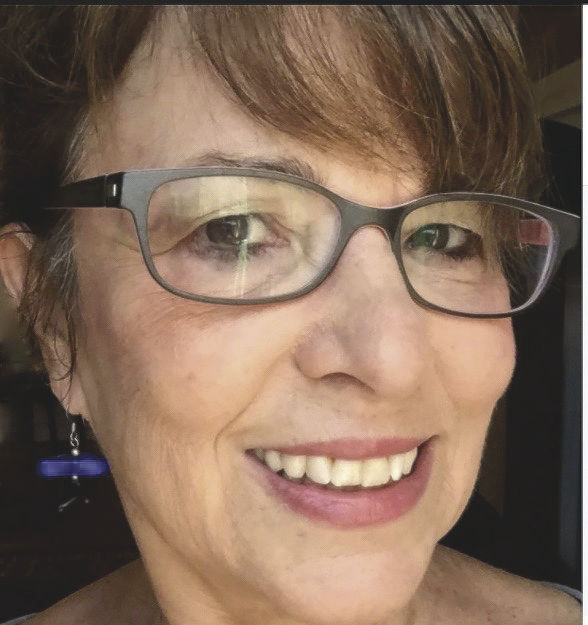BY DEBBIE NATHAN
I visited a judicial proceeding in South Texas last month. Map-wise, it was in America. Courtroom-wise, it could have been in a totalitarian state.
My visit began when I drove to the Port Isabel Detention Center (PIDC). It’s off sun-scorched, pot-holed roads about 13 miles northeast of Los Fresnos High School and a 40-minute drive from Brownsville. Immigrants from throughout the world are held behind double-barbed-wire fences there, waiting while our government decides whether or not to deport them.
I’d gone with a colleague. We work for the ACLU of Texas. She’s an organizer, and I’m the group’s reporter for immigration issues. She went to the PIDC because an undocumented man from San Benito had been stopped for traffic infractions by a state trooper, who then called the Border Patrol, which sent him to the detention center. He has lived in Texas for years and his children were born in the United States. My co-worker hoped to help him post bond that day.
He claimed he had no criminal record. I had been told by the Border Patrol’s Rio Grande Valley Sector Chief Manuel Padilla late last year that when immigrants have been here a while and have U.S.-born children, the Border Patrol avoids processing them for detention if they have no priors. So I wondered: Which story was correct?
But I really went to the PIDC for other reasons. For one, I was interested in its dark history.
In 1990 a guard reported that a 14-year-old girl from El Salvador was brought from a children’s detention center to the PIDC, to dance the lambada for officials there. Female guards later reported that male guards were sexually abusing female detainees. In 2009, a male guard confessed to molesting several women (he was imprisoned.) That same year, inmates staged a massive hunger strike to protest lack of food and medical attention. I wondered if these conditions still persist.
Too, I wanted to observe PIDCs immigration courts, those courts behind barbed wire are where judges decide whether or not detainees can stay in the United States. They courts are run by the U.S. Department of Justice, under the Executive Office for Immigration Review (EOIR).
When I enter courtrooms I rarely tell officials I’m a reporter. It’s generally none of their business. After all, except for circuses like the OJ Simpson trial, journalists expect no seating privileges. We’re members of the public, and courts are open to the public except for sensitive circumstances, such as cases involving children. Generally, a court may close only if lawyers file motions and judges make rulings. Public access is considered vital to American justice.
So, while my co-worker dealt with the San Benito man, I figured I’d attend an immigration hearing.
Instead, a flurry of officials insisted I couldn’t. One was Jennifer Cunningham, the PIDC’s acting court administrator. When I asked to see the prohibition in writing, she seemed puzzled. Someone else said that in the staff’s memory, no one from the public had ever asked to enter a PIDC courtroom. I was dismayed.
Minutes later, Cunningham returned with a document she handed to me. It seems the court administrator had just been schooled. I was right, she apologized profusely: The written rules say immigration hearings are generally public. But it was too late that day to visit. Come back during morning hours, I was advised, because sensitive proceedings never happen then. Morning courts are always open.
So I returned — on the day of the San Benito man’s hearing. But it was the same drill: More personnel insisting the courts are closed, and me protesting. After an hour they relented. I entered a courtroom and witnessed what the public hadn’t seen.
I saw anxious, confused men and women in prison garb, speaking five languages (Spanish; Nepali; Tigrigna, from Eritrea; Quechua, from South America, and Amharic, from Ethiopia). Beyond Spanish, no one in the room could translate. A garbled telephone service substituted. An irritated judge, Keith Hunsucker, yelled at interpreters and detainees to “Speak louder! LOUDER! SPEAK LOUDER!”
Of the dozen immigrants, only three had lawyers. (Unlike in criminal cases, U.S. immigration courts do not provide free attorneys, not even for the indigent.)
Many detainees seemed disoriented. Judge Hunsucker asked if they wanted to hire lawyers. Some said no — then, seconds later, yes. The judge said that would be easy, though surely he knows that free legal representation in South Texas is virtually non-existent.
The San Benito man had no lawyer. Judge Hunsucker asked the government’s attorney why he was detained. “A traffic stop, your Honor,” the government lawyer answered. He added that the man had no criminal record.
So what about Border Patrol Chief Padilla’s claim to me that these people are not targeted by his agency ? Has something changed since late last year? Those questions made me ask myself two others:
Is a yen for opacity why the government discourages public visits to hearings at a remote, forbidding detention center? And can the darkness be illuminated by ordinary people exercising our simple but profound right to be in immigration court? More of the public should come out and sit in on these hearings. Perhaps that will help to shed more light on what’s really going on.





